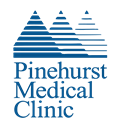October 16th, 2023

By: Matthew Scarlotta, MD, a board-certified medical oncology and hematology physician
As the most common non-skin cancer among women in the United States, you are more than likely to have been affected by breast cancer in some way. Whether you had a friend or family member diagnosed or you are fighting the disease, breast cancer has probably touched your life.
While several factors can increase your chance of developing breast cancer, there is one way to help save your life - through screening.
Screening for breast cancer and other types of cancer, such as colon, cervical, and lung cancer, allows for early detection. When a cancer is caught early, it can allow for easier treatment, thus lowering mortality rates.
According to the Centers for Disease Control and Prevention, there are several screening options available for detecting breast cancer. These include mammograms, breast magnetic resonance imaging, clinical breast exams, and breast self-awareness.
The mainstay of screening for breast cancer is mammography. A mammogram compresses the breast while taking X-rays to detect any abnormalities. There are two different types of mammograms, 2D and 3D. 2D mammograms produce a single 2D image of the breasts while a 3D mammogram uses a series of low-dose X-rays at different angles to generate a three-dimensional image.
Several studies have shown that using three-dimensional images allows radiologists to detect cancer more often and at an earlier stage than a conventional 2D mammogram. 3D mammograms may also be better able to detect breast cancer in patients with dense breast tissue.
Women of average risk for breast cancer should discuss screening options with their physicians at age 40. There are differing recommendations for when women of average risk should begin screening. For example, the National Comprehensive Cancer Network recommends women begin breast cancer screening at age 40, whereas other organizations recommend starting at age 45 or 50. It is important to discuss your personal risk with your physician and the potential benefits and harms of testing to determine the best time to initiate screening.
Certain high-risk populations should begin screening much earlier than those with an average risk of being diagnosed with breast cancer. This includes women who carry certain genetic predispositions for breast cancer such as the BRCA genes, women who have received chest irradiation for treatment of another type of cancer, and those with a significant family history.
To determine your risk, it is important to establish a relationship with a primary care provider. They are experts at preventative health and can help guide you through breast cancer screening as well as screening for other types of cancers. There is also helpful information online, including the National Cancer Institute's website, that can help guide you through breast cancer screening and the different modalities.
Although more commonly found in women, breast cancer can also occur in men. With it being a rare occurrence, screening is not typically recommended; however, if a man is known to carry a genetic predisposition or has an abnormal physical exam, they should discuss screening options with their physician.
Matthew Scarlotta, MD, a board-certified Pinehurst Medical Clinic medical oncology and hematology physician at FirstHealth of the Carolinas Cancer Center.
Back





